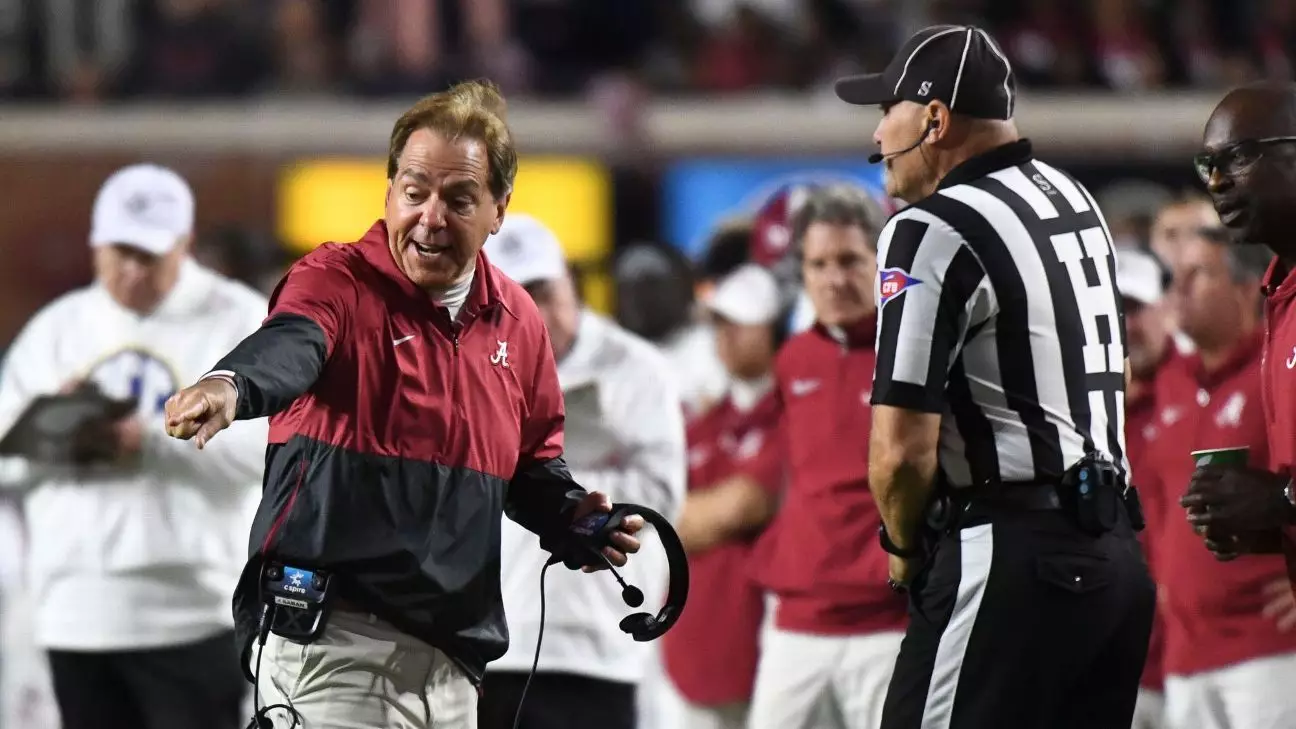In the penultimate rankings of the college football season, the committee’s decisions have been relatively predictable due to the success of the top teams. The favorites, who are ranked in the top eight, have an impressive record of 89-7. However, all seven losses have come against top-13 opponents, proving the strength of these teams. While the committee’s choices may seem consistent, this week’s rankings hold more weight as most of the top 25 teams won’t play again until bowl season. This means that some prominent names and regulars in the playoffs may have valid reasons to be discontent with their rankings.
Ohio State’s Contentious Ranking
From the committee’s first set of rankings, it was evident that there was a preference for Ohio State. However, many people still find their ranking questionable. A closer look at the statistics reveals that Ohio State has fewer top-35 wins by the Football Power Index (FPI), fewer wins against bowl-eligible opponents, and fewer wins against winning Power 5 opponents compared to other one-loss teams like Alabama, Texas, and Oregon. The only category in which Ohio State holds an advantage is “strength of record.” While this may favor the Buckeyes, the eye test still suggests that their ranking is somewhat dubious.
Ohio State may have two marquee wins against Notre Dame and Penn State, but deeper analysis raises doubts about the quality of those victories. Notre Dame was convincingly defeated by Louisville and Penn State’s resume relies heavily on a win against Iowa. Are these wins truly indicative of Ohio State’s strength? It seems that the committee may have overestimated their value.
The Curious Ranking of Oregon
Ranking Oregon ahead of the aforementioned teams seems even more absurd, given the Ducks’ lackluster resume. However, their position will likely be resolved in the Pac-12 title game. On the other hand, Ohio State finds themselves in a comfortable spot, awaiting chaos and aware that no team ranked lower than sixth has made the playoffs at this point in the season. It is possible that if Alabama or Texas secure the “conference champion” title, the committee will consider adjusting the rankings. However, the committee may also choose to evade a contentious Alabama-Texas debate, similar to what occurred in 2014 when they ignored the Baylor-or-TCU debate and favored Ohio State instead.
Washington finds themselves in a win-and-in scenario and is fortunate enough to avoid a first-round game against Georgia if they maintain their position. While the committee hasn’t snubbed the Huskies, they still have reasons to be dissatisfied. It is unjust that the fate of Washington and Oregon, who have already beaten the Ducks, is determined by a single game. Washington has accomplished more in terms of wins against Quad 1 opponents and victories against top conference teams. The importance of conference championship games, driven by financial gain, undermines the integrity of the regular season, which was previously cherished. As the playoff expands to 12 teams, these games may become even more problematic.
Three two-loss teams are ranked ahead of Oklahoma, even though they will not participate in championship weekend. This effectively determines the Sooners’ position and does not bode well for their chances of securing a spot in a prestigious New Year’s Six bowl game. While Penn State may have a thin resume with their second-best win coming against Northwestern, statistical rankings and resumes suggest that Oklahoma is better than Missouri or Ole Miss. The oversight of Oklahoma’s strength and accomplishments has significant implications given the shift in New Year’s Six bowl bids.
Discrepancies in Non-Power 5 Teams’ Rankings
The committee’s rankings have raised eyebrows among non-Power 5 teams. Only Tulane and Liberty made the cut, with Tulane ranked at No. 22. This decision is perplexing considering Tulane’s loss without starting quarterback Michael Pratt against the No. 11 team in the country. Meanwhile, teams like Toledo, SMU, and James Madison were completely overlooked. With Tennessee positioned at No. 21, despite their poor performances against top teams and 5-7 Florida, it becomes evident that the committee has made it harder to criticize teams that truly deserve scrutiny.
The Need for Upsets and Compelling Arguments
The abundance of favorites winning games has made it difficult to find reasons to be outraged by the committee’s rankings. The essence of these rankings is debatable and passionate discussions about seemingly trivial rankings lose their significance without compelling arguments. Fans hope for more upsets in the championship weekend to create controversies and engage in debates that fuel their emotions. As the season approaches its climax, college football enthusiasts eagerly await thrilling games and rankings that provoke lively discussions.

Leave a Reply